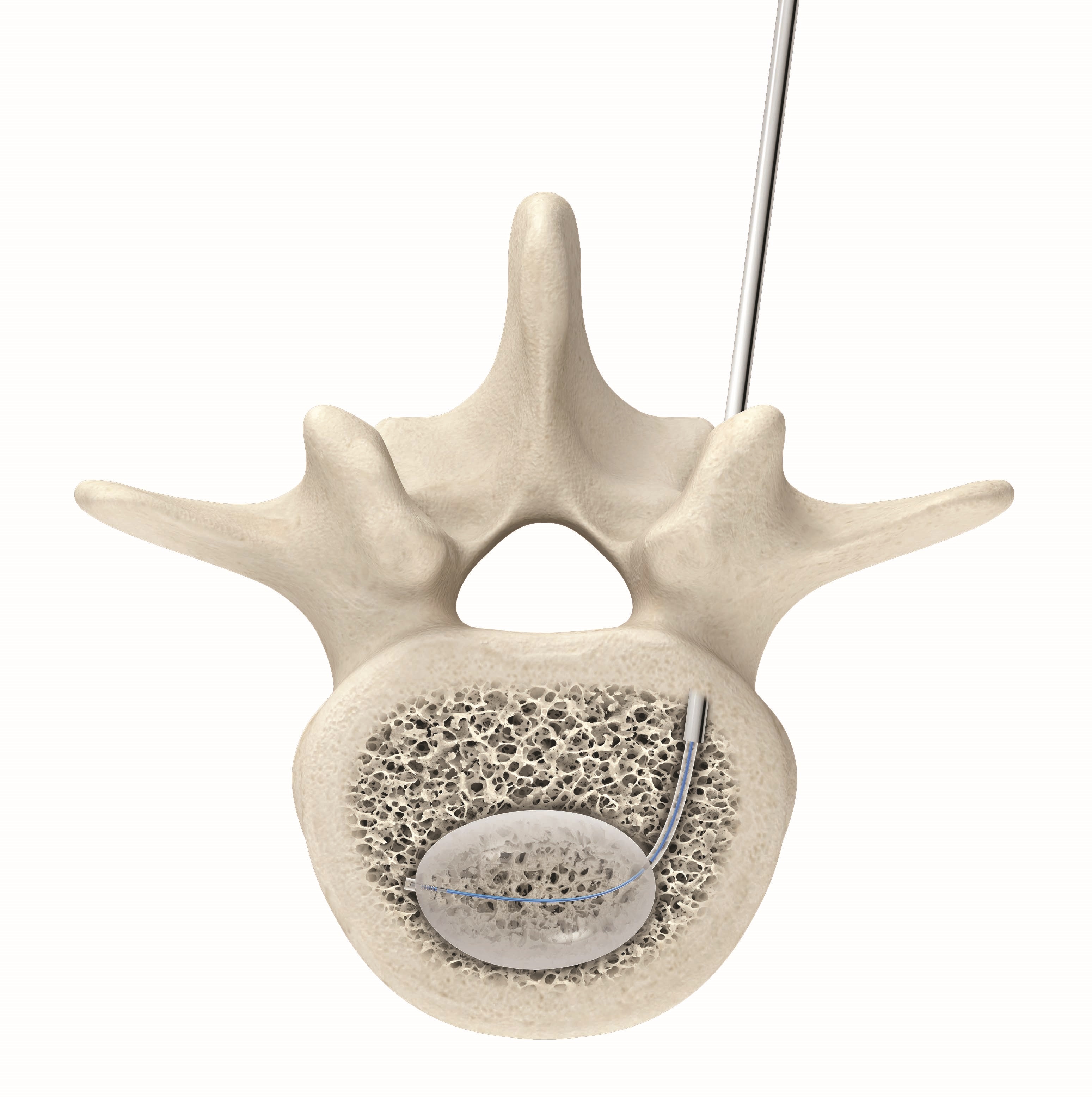Vertebral compression fractures impact about 750,000 Americans every year.
At the American Society of Spine Radiology meeting in San Diego, held from Feb. 23 to Feb. 26, 2017, researchers presented data from the VAPOUR trial, which compared vertebroplasty versus placebo intervention for treating vertebral compression fractures. 
Published in The Lancet, the study revealed vertebroplasty yielded benefits over the sham procedure, with 44 percent of the vertebroplasty patients achieving the primary outcome, compared to only 21 percent of the control group.
Kalamazoo, Mich.-based Stryker contributes to VCF treatment with its AVAflex Balloon System, which received FDA clearance in March 2017. The AVAflex Balloon System features a curved balloon and nitinol-technology to treat vertebral compression fractures.
Stryker Brand Manager Aaron Shearer notes the AVAflex stands out from other vertebral augmentation systems because surgeons leverage a unipedicular approach for midline placement of the balloon.
"In order to get a traditional large fill inside a vertebral body, [surgeons] usually have to go down two pedicles or go down two needles," explains Mr. Shearer. "[The AVAflex curved balloon] simplifies the procedure, making it possible to achieve ideal balloon placement more quickly."
Stryker's system also presents the potential for less risk, he adds, because surgeons only have to go down one side for access.
The balloon system's 11-gauge size allows for just one insertion and a smaller needle than previously used, yielding less trauma and more access. The company also developed a 13-gauge straight balloon, which is ideal for higher thoracic cases in which pedicles are very small and fracture access proves difficult.
The FDA clearance is significant for Stryker's portfolio, as the AVAflex is now indicated for use with the company's cement and AutoPlex Mixing and Delivery System. The automated mixing delivery system eliminates variability and delivers immediate high viscosity; physicians may better control the cement fill when filling the vertebral body.
"We're seeing heavy adoption all across the country," Mr. Shearer says.


